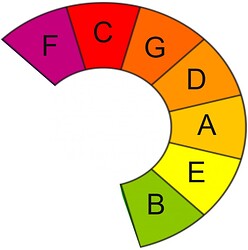Delving into music theory over the last couple of years has not only been greatly beneficial for my guitar development, but I find it an absolutely fascinating subject in its own right.
I’ve been delving into pentatonics a great deal in the last few months, and last night I had a random thought.
" How many diatonic chords can I build from the pentatonic scales, given the absence of 2 of the 7 notes from the parent scales? And can what I find tell me anything useful?
As a first ballpark guess, I thought, probably 3, maybe 4. Certainly from the root note, and likely 2-3 others, given I was only missing 2 notes. What I discovered was not only surprising, but intriguing.
Using the Keys of A/Am as a working example, I thought well, OK, heres the pentatonic scales, lets see what happens.
A Major Pentatonic
A B C# E F#
To my surprise, I could only build 2 chords.
- One from the root - A Major ( A,C#E),
- One from the 6th - F#m (F#,A,C#).
Mmm, OK I thought, lets see what happens with the Minor Pentatonic.
A Minor Pentatonic
A C D E G
Again, I could only build 2 chords
- One from the root - Am (A,C,E)
- One from the 3rd - C (CEG).
Well, that certainly surprised me, given you take only 2 notes from 7, and end up with 2 chords from 7. Then I saw it - the little gem inside both. The only other chord I can build in either pentatonic scale is the relative major/ minor pair of the key.
For A Major pentatonic, the only other chord is F#m, the relative minor of A major.
For A minor pentatonic, the only other chord is C major, the relative major of A minor.
Now this has really got me thinking. " Why does this occur".
Now, this intellectual wandering probably isnt going to help me nail the solo from ACDCs, You Shook Me All Night Long that I’ve been working on lately, but its fascinating nonetheless, and one to add to the mind files, which may provide some fruit somewhere down the line.
I’d be very interested in any input from the more experienced here. ( "Cue, Richard - @Richard_close2u ).
Cheers, Shane




